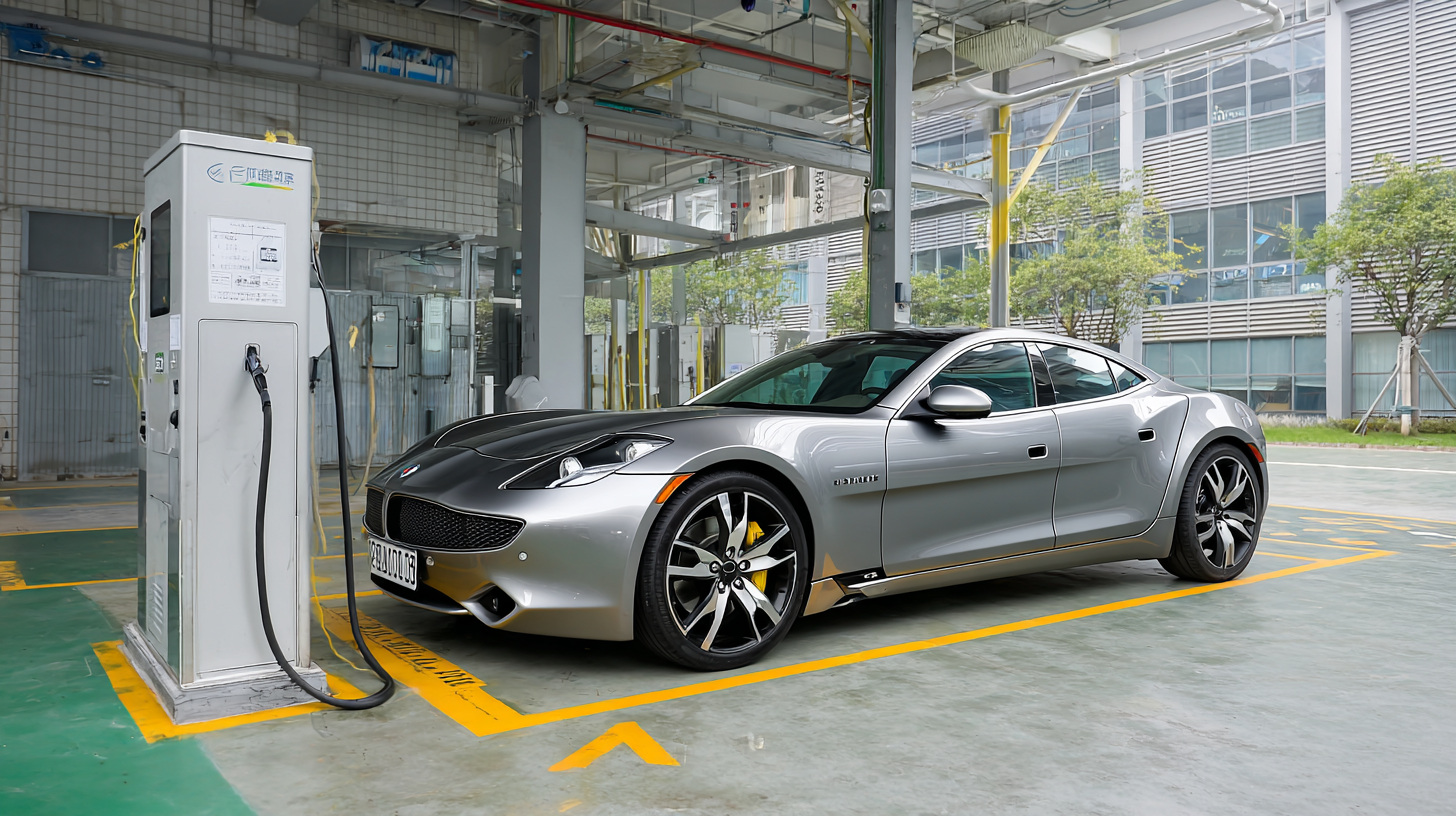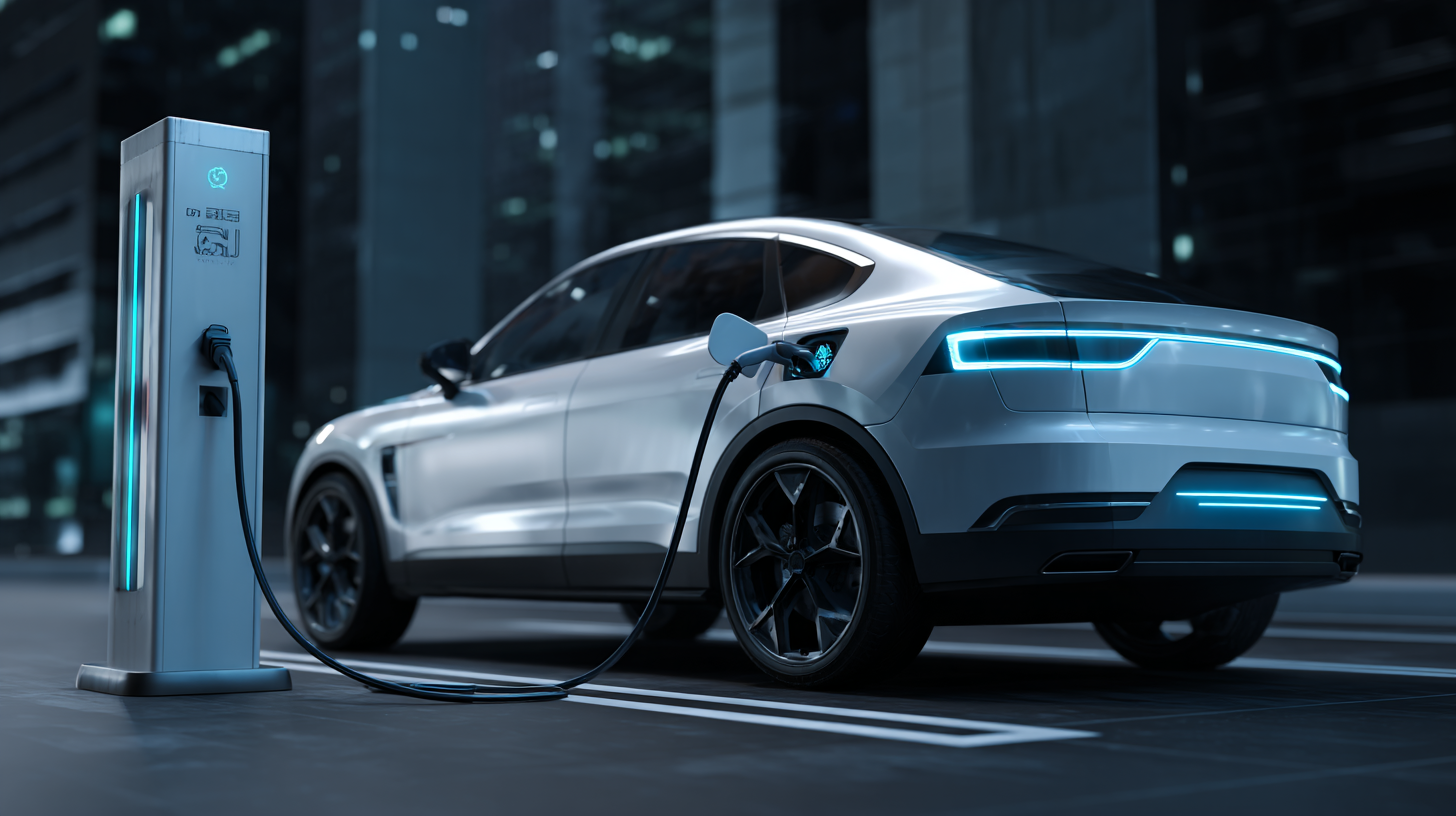
Wall Mounting EV Charge Station
2025 Trends Revealed 7 Key Innovations in Best Ev Charger Technology
As the electric vehicle (EV) market continues to surge, with projections indicating that EV sales will reach 30% of total vehicle sales by 2030, the demand for cutting-edge EV charger technology has never been more pressing. Industry reports highlight that the global EV charger market is expected to expand at a CAGR of over 30% through the next five years, driven by the increasing adoption of electric vehicles and supportive government policies. This trend underscores the need for innovation in EV charger technology, especially as manufacturers from top-tier factories in China lead the charge in developing efficient, sustainable solutions. In this blog, we will explore seven key innovations shaping the future of EV chargers, providing insights into how these advancements will enhance the charging experience and contribute to the broader adoption of electric vehicles worldwide.

Key Innovations Shaping the Future of EV Charger Technology in 2025
As we delve into 2025, the landscape of electric vehicle (EV) charging technology is poised for transformative advancements. A recent analysis suggests that the EV charging infrastructure market is expected to grow from an impressive USD 31.1 billion in 2025 to a staggering USD 113.4 billion by 2032, highlighting the urgency for innovations that enhance accessibility and efficiency. Emerging technologies such as advanced battery solutions and expanded charging networks will play pivotal roles in facilitating the surge in electric mobility.
Among the key innovations on the horizon, wireless EV charging emerges as a game-changer, projected to soar from USD 230 million in 2023 to USD 3.1 billion by 2033. This breakthrough will not only enhance convenience for users but also streamline the charging process, allowing vehicles to power up seamlessly while parked. Alongside this, vehicle-to-grid (V2G) technology is set to revolutionize how energy is managed, creating an interactive ecosystem that can benefit both energy grids and vehicle owners alike. These innovations are critical in shaping the future of EV charging technology, reinforcing the industry's commitment to sustainability and efficiency.
2025 Trends Revealed: 7 Key Innovations in Best EV Charger Technology
| Innovation | Description | Expected Impact | Implementation Year |
|---|---|---|---|
| Fast Charging Technology | Reducing charging time to under 10 minutes for most EVs. | Significantly increases EV adoption rates. | 2025 |
| Wireless Charging | Allows vehicles to charge without cables using induction technology. | Enhances convenience; reduces wear on connectors. | 2025 |
| Smart Grid Integration | Charging stations linked with grid systems for better energy management. | Optimizes energy use and reduces costs. | 2025 |
| Mobile Charging Units | Portable charging solutions for emergencies and remote locations. | Increases EV usability in various settings. | 2025 |
| Vehicle-to-Grid Technology | Allows EVs to send energy back to the grid during peak demand. | Enhances grid stability and offers economic incentives for owners. | 2025 |
| Cloud-Based Management Systems | Remote monitoring and management of charging infrastructure. | Increases efficiency of charging networks. | 2025 |
| Enhanced Safety Features | Improved safety protocols for charging stations to prevent accidents. | Boosts consumer confidence and safety. | 2025 |
Essential Technical Specifications for Optimal EV Charging Performance
As the electric vehicle (EV) market continues to expand, understanding the essential technical specifications for optimal EV charging performance is crucial for both manufacturers and consumers. Key innovations in EV charger technology in 2025 highlight the importance of charging speed, efficiency, and compatibility with various EV models. The integration of high-power charging capabilities, such as ultra-fast chargers that deliver up to 350 kW, dramatically reduces charging time, enabling users to get back on the road in minutes rather than hours.
Moreover, robust safety standards and smart technology are vital considerations in charger design. Advanced features like automatic fault detection and real-time monitoring are becoming standard, ensuring safe and reliable charging experiences. Additionally, interoperability is a significant factor, as the best chargers now support universal connectors, making it easier for EV owners to charge their vehicles at various locations without compatibility concerns. Focused on these specifications will help establish an efficient and user-friendly EV charging ecosystem, paving the way for widespread electric vehicle adoption.
Digital Advancements in EV Charger Technology: A Deep Dive
As the electric vehicle (EV) market continues to grow, the advancements in EV charger technology are evolving rapidly. The year 2025 is poised to highlight several digital innovations that promise to enhance the charging experience for consumers and streamline the infrastructure needs of cities. One of the pivotal trends is the integration of smart technology in chargers, allowing for real-time data analysis and optimization of charging sessions. Smart chargers can adjust their rates based on grid demand, offering cost savings to users while supporting a more sustainable electricity grid.
 Another significant advancement is the incorporation of mobile applications that provide users with comprehensive control over their charging. These apps can facilitate remote charging management, giving users the ability to schedule charging times and monitor energy consumption. Additionally, the implementation of vehicle-to-grid (V2G) technology enables EVs to not just consume energy, but also supply it back to the grid during peak demand. This bi-directional energy flow creates a more resilient power network, showcasing how digital advancements in EV charger technology are not only improving user experience but also contributing to a greener future.
Another significant advancement is the incorporation of mobile applications that provide users with comprehensive control over their charging. These apps can facilitate remote charging management, giving users the ability to schedule charging times and monitor energy consumption. Additionally, the implementation of vehicle-to-grid (V2G) technology enables EVs to not just consume energy, but also supply it back to the grid during peak demand. This bi-directional energy flow creates a more resilient power network, showcasing how digital advancements in EV charger technology are not only improving user experience but also contributing to a greener future.
Top Types of EV Chargers: Comparing Speed, Efficiency, and Cost
As electric vehicle (EV) adoption accelerates, understanding the different types of EV chargers becomes crucial. Comparing the speed, efficiency, and cost of chargers reveals significant innovations shaping the industry. Fast chargers can deliver substantial power, allowing vehicles to charge quickly, which is essential for commercial fleets aiming to maximize operational efficiency. Meanwhile, cost-effective solutions are emerging, especially for residential areas, where optimization of energy management systems facilitates proactive charging without straining local grids.
Recent advancements, such as sophisticated algorithms designed for managing large data volumes associated with charging networks, highlight a trend towards smart charging solutions. These technologies not only improve the user experience but also enhance grid stability by allowing charging to be scheduled during periods of high power availability. Additionally, integration of renewable energy and battery storage systems at charging stations can further optimize performance and reduce costs, making EV infrastructure not just a necessity, but a strategically viable investment for the future.

Future Trends in EV Charger Design: Sustainability and User Experience
The future of electric vehicle (EV) charger technology is increasingly focused on sustainability and user experience, reflecting changing consumer expectations and environmental priorities. According to a recent report by the International Energy Agency, the global stock of electric cars surpassed 10 million in 2020, marking a 43% increase from the previous year. As this trend continues, the demand for efficient and eco-friendly charging solutions is vital. Innovations such as solar-powered charging stations and sustainable materials in charger design are expected to transform the market, promoting energy independence while reducing carbon footprints.
User experience is also becoming a significant factor in EV charger design. A study from McKinsey & Company highlights that nearly 70% of EV owners consider charging convenience essential for their buying decisions. This has led to advancements in smart charging technologies that enhance accessibility. Features like real-time pricing updates, user-friendly mobile apps, and seamless integration with smart home systems are making charging faster and more intuitive. As designs evolve, the emphasis on ensuring that users have a positive experience while remaining sustainable will undoubtedly shape the next generation of EV chargers.

